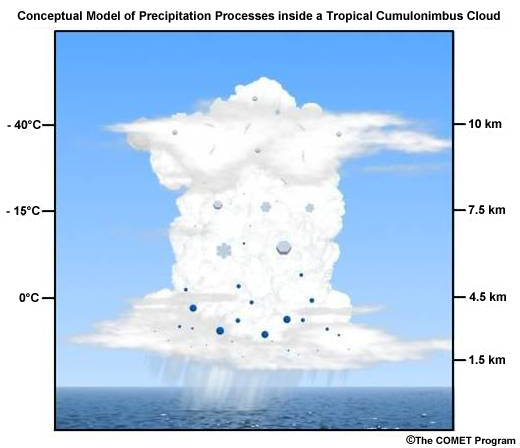Limitations » Processor Assumptions » Homogeneity

A third assumption is that all target particles are small, homogenous spheres of precipitation that have diameters much smaller than the radar's wavelength.

When the size of the particle is much less than the wavelength of the radar, a nearly linear relationship (called the "Rayleigh scattering regime") exists for the amount of scattering produced. This applies to most precipitation, as average raindrops range in size from about 1 mm to 4 mm and snowflakes are typically a bit larger. When the size of a particle is about the same as, or larger than, the radar wavelength, the scattering produced by particles becomes more complicated and falls under the "Mie scattering regime."
Because the radar equations are based on Rayleigh scattering approximations, any large targets (for example, hailstones, birds, some insects) will result in errors in scattering calculations and therefore reflectivity values. Furthermore, scattering calculations assume that the targets are spheres while birds, insects, and many hailstones are not. Therefore, reflectivity values from large targets should not be taken to be representative of their size.